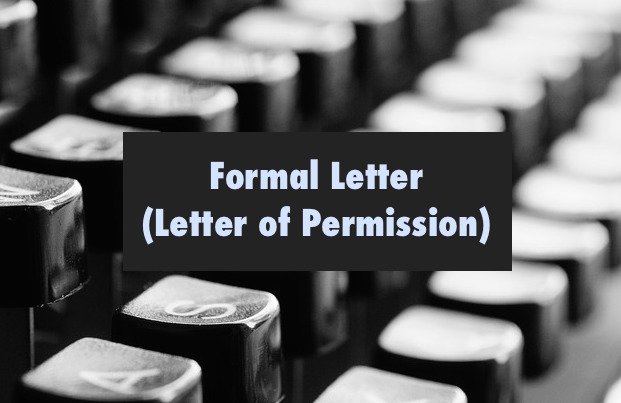Today I’d like to discuss about How To Write a FORMAL LETTER to ask for PERMISSION.
Before that, for FORMAL LETTER, what you/your students need to know:
-
There is a FORMAT.
-
Use PRESENT TENSE. (in some cases, past tense form will be required, however, if you are dealing with weak students, you want to avoid it. Thus, the present tense approach)
-
Popular questions: PERMISSION, COMPLAINT, APPLICATION.
-
Useful sentences:
- On behalf of the ___________, I am writing this letter to_______________.
- I hope you can consider this.
- I hope you can take (immediate/prompt) actions.
- Please contact me at 01-2345678.
- Thank you for your cooperation. I hope to receive your reply soon.
All right. Let’s start!
Step 1: Read the QUESTION
Many students don’t realise the importance of reading the question as clear as possible. This will help you in your answer and help you to write better.
Sample question:

Underlining the keywords(kata kunci) will help you. Make sure you understand everything the question asks for. Now you can go ahead to write your letter.
Step 2: Know Your Format.
Every formal letter comes in the same format. You need to know this:

Step 3: Give a title
You can normally get this from the question. So don’t go wasting your time for a very cool title. Your content actually matters more(isi lebih penting)!

↓
Just take it form the question and move on to the real writing.
Step 4: Use the standard INTRODUCTION
On behalf of the ___________, I am writing this letter to_______________.
You can always start the first sentence of a formal letter like this. Again, you can get ideas from the question.
On behalf of–> bagi pihak….
I am writing this letter to/for –> Saya menulis surat ini untuk…

↓

Step 5: Give details: Date, Time, Number of People.
Whether or not the question ask for these details, it is always good to provide some information to prove that you know what you’re doing.

Step 6: Give 2-3 Reasons+Examples: Why do you want that? For example?
Use connecting words(Penandawacana):
- First of all/Firstly/First and foremost -pertama sekali
- Secondly – yang kedua
- Next – seterusnya
- Besides/other than that/not only that- selain itu
- Also – dan juga
- Selepas itu- after that
- Lastly/Last but not least/Finally- Akhirnya/Yang terakhir
- In conclusion- kesimpulannya

Step 7: Use the standard Wrap-up (penutup)
-
I hope you can consider this.
-
I hope you can take (immediate/prompt) actions.
-
Please contact me at 01-2345678.
-
Thank you for your cooperation. I hope to receive your reply soon.
The way to end a formal letter is often similar:
- You have to tell them you hope they can think about your request,
- ask them to reply you as soon as possible,
- leave your contact number,
- and say thank you to them.

Step 8: Check your work
You SHOULD always check your work after you finish writing. Check your format, check you tenses, check your spelling, anything. A simple read through will also help!

*Know that you should go ahead to write longer if you are able to. However, if you think you are weak , this is a good writing to start with.
I hope this helps you.
Happy Learning, Happy Teaching.






6 thoughts on “How To Write a Letter of Permission (Formal Letter)”
It is realy very helpful
Thank you very much.
Very helpful.
#gracias
gooooooooooooooooooooooooooooooood
Hello.. Is it advisable to write paragraph 2 as such? Wouldn’t the students be penalized for not using complete sentence(s)?
Hi Momo,
Perhaps it comes down to “do you think this appears in everyday formal letter?” and “is it acceptable for you as a teacher?”
One concern may be that students might not have enough words in their writing. To me , it wouldn’t be a big issue because learners are responding to the questions but I can understand if some may not think the same. Care to share your thoughts?
Grace
nice…and…usefull tq